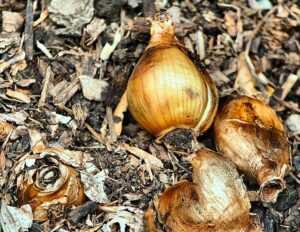This professional guide elaborates on advanced cannabis cloning techniques designed to enhance the success rate of your cloning process. From the basics of cannabis genetics to the intricacies of cutting and rooting, we’ll delve deep into each step of the process. With tips from experienced cultivators, this guide aims to help you achieve healthier clones and ensure your future success in cannabis cultivation.
1. Understanding the Genetics of Cannabis: Just How Crucial Is It?
Understanding the genetics of cannabis is crucial for achieving a higher success rate in advanced cloning techniques. Cannabis plants vary widely in their genetic makeup, which directly affects their growth, potency, and overall quality. By understanding the genetics of the plants you are working with, you can make more informed decisions about which plants to clone and how to care for them.
One key aspect of cannabis genetics is determining the desired traits you want to replicate through cloning. Whether it’s high THC levels, specific terpene profiles, or resistance to pests and diseases, knowing the genetic makeup of your plants allows you to select the best candidates for cloning. This knowledge provides a foundation for creating a successful cloning program.
Additionally, understanding the genetics of cannabis can help you identify potential issues or challenges that may arise during the cloning process. Certain genetic traits may make a plant more susceptible to stress, disease, or nutrient deficiencies. By being aware of these potential pitfalls, you can take proactive measures to prevent or mitigate them, leading to a higher success rate in your cloning endeavors.
Furthermore, understanding the genetic differences between cannabis strains can guide your decisions on how to care for your clones. Different strains may have specific requirements for nutrients, light intensity, and environmental conditions. By tailoring your care to the specific genetics of your clones, you can optimize their growth and ensure their overall health and vitality.

1. An image depicting different cannabis strains to illustrate genetic diversity
2. ‘The best time to clone is when…’ – Understanding the Perfect Timing for Cloning
The best time to clone cannabis plants is during the vegetative stage when they are actively growing and developing new shoots. This stage typically occurs after the seedling stage and before the flowering stage.
Cloning during the vegetative stage ensures that the plant has enough energy and resources to support the growth of new roots and establish a healthy clone. Clones taken during this stage tend to root more easily and have a higher success rate compared to clones taken during other stages of growth.
It is crucial to select plants for cloning that are in good health and showing vigorous growth. Look for plants with strong root systems, healthy leaves, and no signs of nutrient deficiencies or pests. These plants are more likely to produce successful clones with strong root development.
When selecting branches for cloning, choose ones that are strong and healthy, but not overly woody. Ideally, the branches should have a decent amount of flexibility and should not be too woody or too soft. This ensures that the clone has the right balance of strength and flexibility to root successfully.
In terms of timing, it is recommended to clone cannabis plants when they are at least four to six weeks old. This allows the plant to develop a strong root system and establish a healthy vegetative growth stage. Cloning too early may result in weaker clones with limited root development, while cloning too late may result in clones that take longer to root or have a lower success rate.
3. Cutting Techniques: Are You Doing It Right?
When it comes to cutting techniques for cannabis cloning, precision and cleanliness are key. First, ensure that you are using sharp, sterile tools such as a clean razor blade or scissors. This helps to minimize damage to the plant tissue and reduce the risk of introducing pathogens.
When taking cuttings, make sure to select a branch that is healthy and has several nodes. Nodes are the points where leaves or branches emerge from the stem. It is best to take cuttings from the lower part of the plant as they tend to root more easily.
To make the cut, make a clean and angled cut just below a node. The angle should be approximately 45 degrees, which helps to increase the surface area for rooting. Avoid crushing or squeezing the stem as this can damage the vascular tissue and hinder successful rooting.
After cutting, it is important to immediately place the cutting into a container of water or a rooting hormone solution to prevent air bubbles from entering the stem and blocking water uptake. This step helps to ensure that the cutting remains hydrated and increases its chances of successful rooting.
To further improve success rates, some growers choose to remove the lower leaves of the cutting, leaving only a few leaves at the top. This reduces the demand for water and nutrients, allowing the cutting to focus its energy on root development. However, it is essential to leave enough leaves to support photosynthesis and provide energy for the cutting.

3. An illustration demonstrating the correct cutting technique for cannabis cloning
4. Rooting Your Clones: What’s the Best Medium?
When it comes to rooting your cannabis clones, choosing the right medium is essential for their successful development. One popular option is using a rooting gel or powder, which contains hormones that promote root growth. These products can be applied directly to the cut end of the clone before placing it into the chosen medium. Rooting gels and powders provide a boost of hormones that stimulate root development and increase the chances of successful cloning.
Another commonly used medium for rooting cannabis clones is rockwool. This inert and sterile material provides excellent moisture retention and aeration for the developing roots. It is essential to soak the rockwool cubes in pH-balanced water before use to ensure they are fully saturated. Once the cubes are moist, gently insert the cut end of the clone into the pre-made hole in the rockwool cube, ensuring that the stem is securely placed.
Peat pellets or coco coir are also popular choices for rooting cannabis clones. These mediums are organic and provide good moisture retention. To use peat pellets, soak them in water until they expand and become saturated. Then, create a small hole in the pellet and gently insert the clone’s cut end. Coco coir can be used similarly, with the added benefit of being more environmentally friendly.
Regardless of the medium chosen, it is crucial to maintain proper environmental conditions for successful rooting. This includes maintaining a temperature range of 70-75°F (21-24°C) and keeping humidity levels around 70-80%. Additionally, providing gentle and indirect light during the rooting process can help the clones establish roots more effectively.
Regularly monitoring the moisture levels in the chosen medium is vital. Overwatering can lead to root rot, while underwatering can cause the clones to dry out and fail to root. Strike a balance by ensuring the medium remains consistently moist but not waterlogged.
5. The Role of Light in Successful Cannabis Cloning: How Much is Too Much?
Light plays a crucial role in the successful cloning of cannabis plants. While light is essential for photosynthesis, providing too much light can be detrimental to the delicate cloning process. Clones are more sensitive to intense light compared to mature plants, as their root systems are not yet fully developed. Excessive light can lead to stress and stunted growth, ultimately reducing the success rate of cloning.
To ensure successful cloning, it is recommended to provide clones with a moderate amount of light. Indirect and diffused light is preferable during the rooting phase, as it helps the clones establish a strong root system without causing stress. Fluorescent lights or LED grow lights are popular choices for providing the right amount of light intensity and spectrum for clones. These lights can be positioned at an appropriate distance to provide adequate coverage without overwhelming the clones.
Maintaining a consistent light cycle is also essential for successful cloning. A commonly used light schedule for clones is 18 hours of light followed by 6 hours of darkness. This light cycle mimics the vegetative stage and promotes healthy growth. However, it is crucial to ensure that the clones also receive a period of darkness to allow for rest and recovery.
It is important to note that different cannabis strains may have varying light requirements. Some strains may thrive with slightly more or less light, so it is beneficial to research and understand the specific needs of the strain you are cloning.
Regular monitoring of the clones’ response to light is crucial. If you notice signs of light stress, such as wilting or yellowing leaves, it may be an indication that the clones are receiving too much light. In such cases, adjusting the distance or intensity of the lights can help alleviate the stress and improve the success rate of cloning.
6. Watering Regime: Is Overwatering Your Biggest Enemy?
Overwatering is a common mistake that can significantly affect the success rate of cannabis cloning. While it is essential to provide adequate moisture for the clones, too much water can lead to root rot and hinder the development of healthy roots. Proper watering is crucial for maintaining the right balance of moisture in the growing medium.
One of the key factors in preventing overwatering is to choose the right growing medium. A well-draining medium, such as a mix of perlite and coco coir, allows excess water to drain away, preventing waterlogged conditions. This promotes healthy root growth and reduces the risk of root rot.
It is important to water the clones thoroughly but avoid saturating the growing medium. Allow the top layer of the medium to dry out slightly before watering again. This helps to encourage the roots to grow and reach out in search of water, promoting a stronger root system.
Regularly monitoring the moisture levels in the growing medium is vital. You can use a moisture meter or simply check the moisture level by inserting your finger into the growing medium. If it feels excessively wet, it is a sign that the clones may be overwatered, and you should adjust your watering schedule accordingly.
Another technique to prevent overwatering is to use a misting spray to hydrate the clones’ leaves instead of drenching the entire growing medium. This provides moisture without overburdening the roots with excess water.
In addition to the frequency of watering, the timing of watering also plays a role in preventing overwatering. It is generally recommended to water the clones in the morning, allowing any excess moisture to evaporate throughout the day. This helps to prevent the accumulation of moisture and reduces the risk of fungal diseases.
7. Troubleshooting Common Problems: How to Overcome Cloning Challenges?
When it comes to cannabis cloning, growers often encounter various challenges. However, with the right knowledge and techniques, these issues can be overcome, ensuring a higher success rate for your clones. Here are some common problems that may arise during the cloning process and how to troubleshoot them:
- 1. Rooting Failure:
One of the most common challenges in cannabis cloning is a failure to develop roots. This can be due to factors such as improper cutting techniques, inadequate moisture levels, or incorrect rooting mediums. To overcome this issue, ensure that you use sharp, sterile tools for making clean cuts on the mother plant. Additionally, maintain proper moisture levels in the growing medium and choose a rooting medium that promotes root development, such as a mix of perlite and vermiculite. - 2. Mold and Fungal Infections:
Mold and fungal infections can quickly spread and damage your clones. To prevent these issues, maintain proper air circulation and humidity levels in your cloning area. Ensure that your clones have enough space between them to prevent overcrowding, which can create a humid environment ideal for mold growth. If you notice any signs of mold or fungal infections, remove the affected clones immediately and treat the remaining ones with a suitable fungicide. - 3. Nutrient Deficiencies:
Nutrient deficiencies can negatively impact the growth and development of clones. To prevent this, ensure that you provide a balanced nutrient solution specifically formulated for the cloning stage. Monitor the pH levels of the nutrient solution regularly and adjust as necessary to maintain optimal nutrient uptake. Additionally, pay attention to the signs of nutrient deficiencies, such as yellowing leaves or stunted growth, and address them promptly by adjusting your nutrient regimen.
Advanced Cloning Techniques for Cannabis:
| Technique | Process | Tips | Goal |
|---|---|---|---|
| Genetics | Cutting & Rooting | From Experienced Cultivators | Healthier Clones |
| Foliar Spraying | Stimulating Rooting Hormones | Mix solution carefully | Faster Root Development |
| Humidity Domes | Increasing Moisture | Regularly Monitor Temperature | Optimum Growing Conditions |
| Lighting Setup | Providing Light | Check for Heat & Light Intensity | Sufficient Photosynthesis |
In conclusion, advanced cloning techniques for cannabis are essential tools for any cannabis cultivator. By understanding and applying these techniques, you can significantly increase your success rate, producing healthier, more viable clones. Remember, the key to successful cloning lies in careful preparation, precise execution, and continuous learning.





